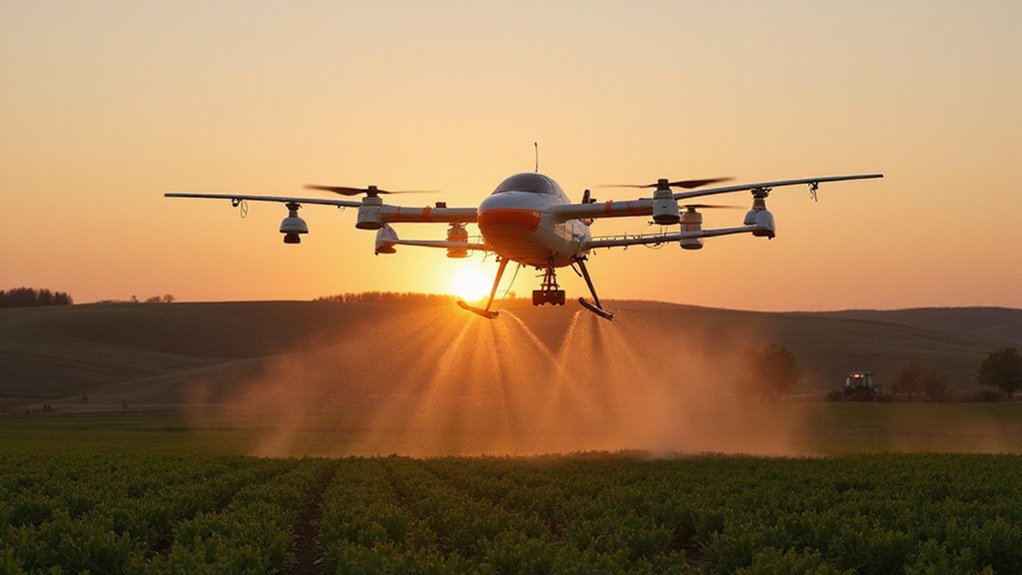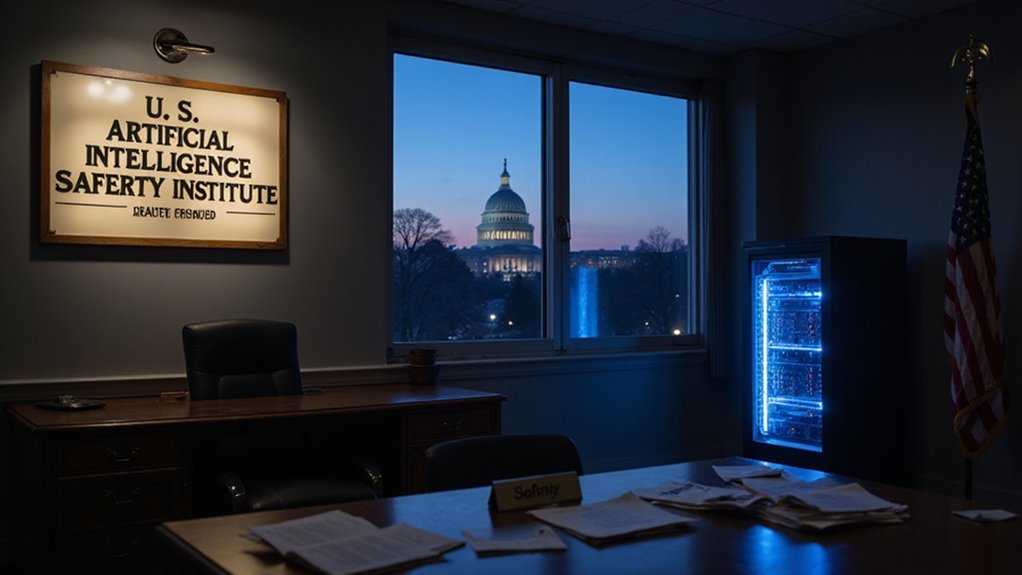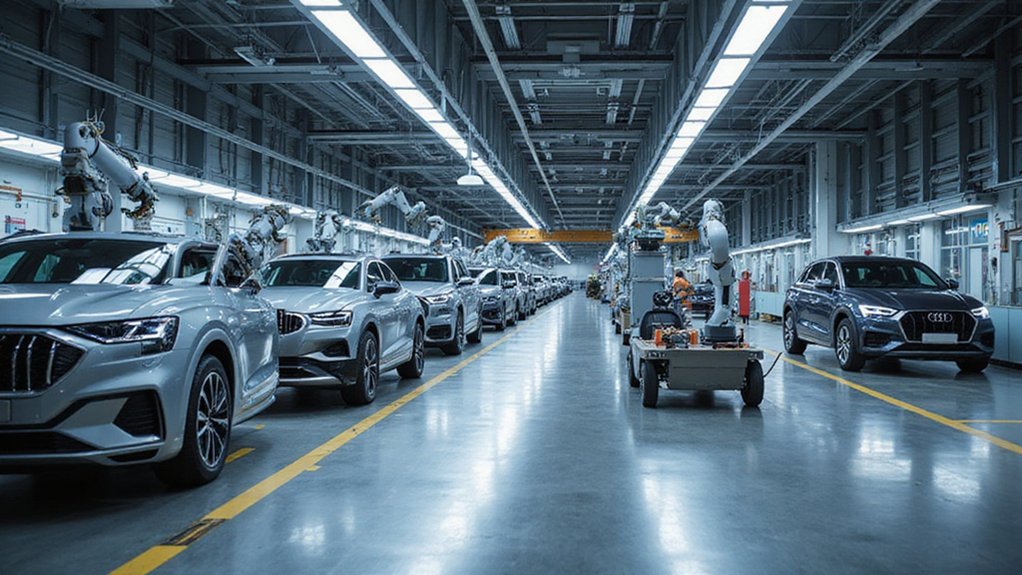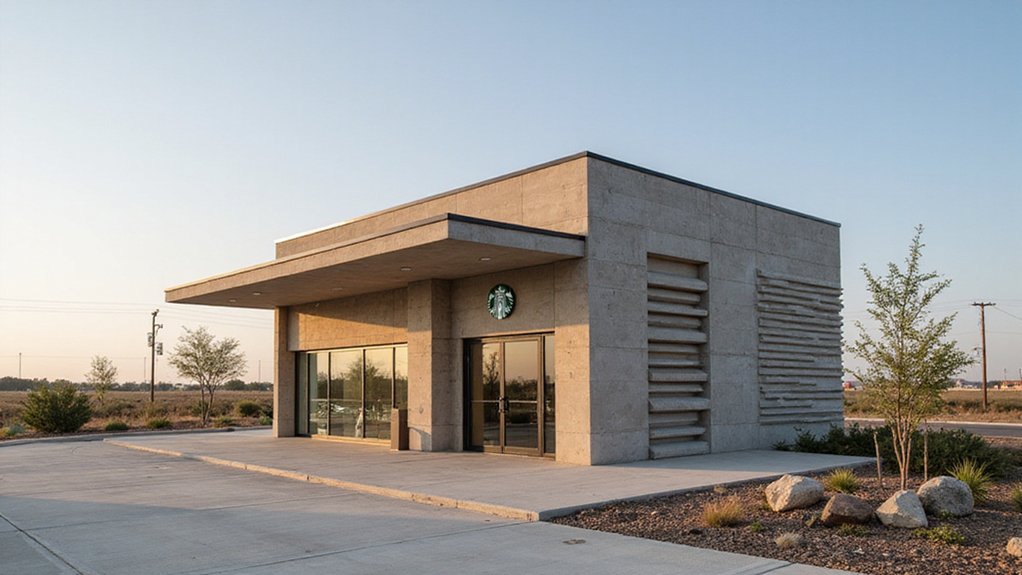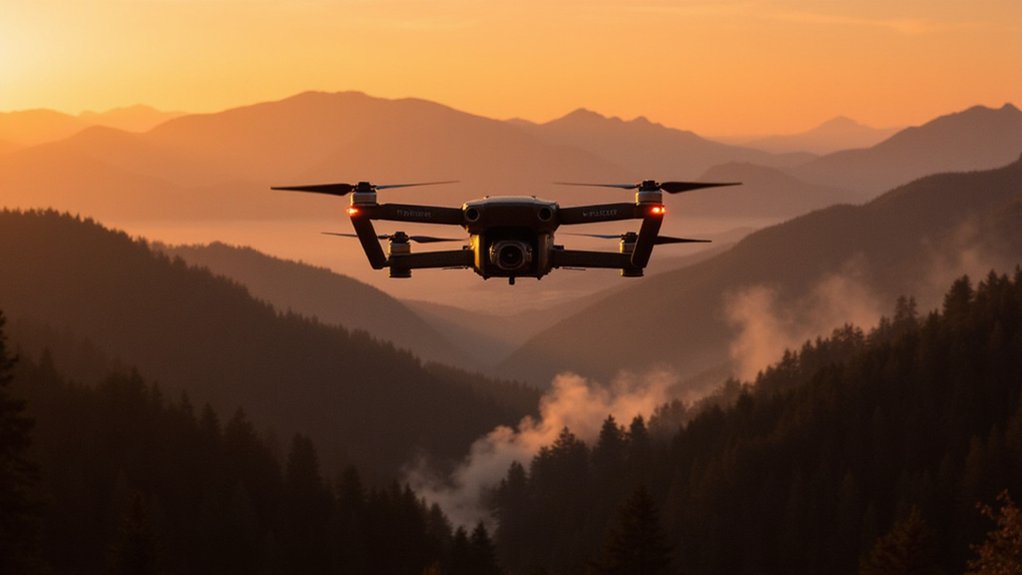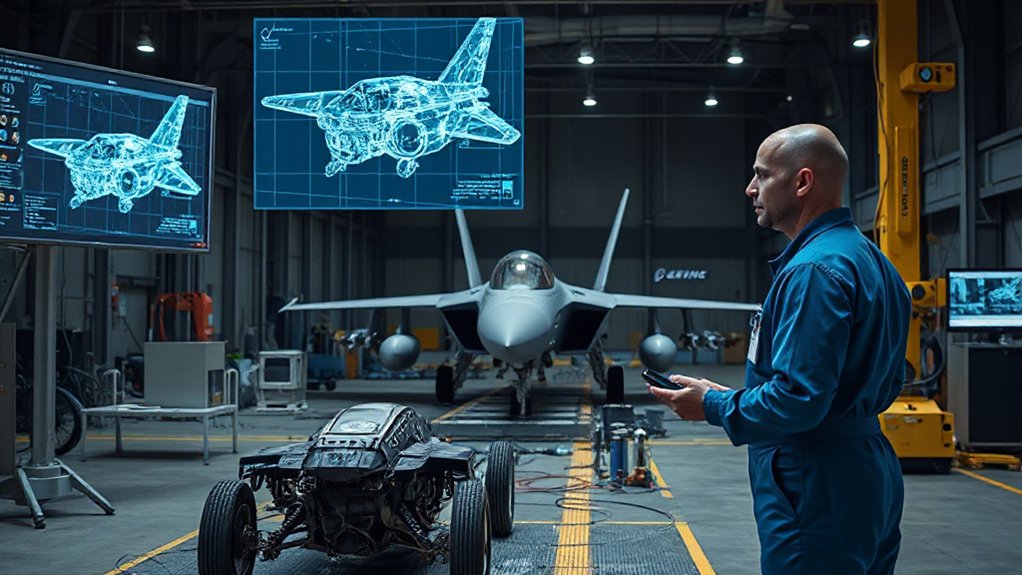Transformation in the skies above America’s farmlands is happening right now. No more pilots risking their lives in low-altitude crop dusting runs. No more fatal crashes. Autonomous aerial crop sprayers are taking over the dangerous jobs, and it’s about time.
These flying robots aren’t replacing all conventional methods – they’re complementing them. Drones like the Sprayhawk can take off vertically, follow pre-programmed paths, and spray with precision that human pilots can only dream about. They use RGB cameras to evaluate crop health in real-time, then adjust spray accordingly. Pretty clever stuff.
Precision agriculture takes flight with drones that see, think, and spray smarter than any human pilot.
The tech is impressive. Advanced LIDAR and RADAR systems let these machines operate day and night – no coffee breaks needed. They calculate vegetation indices on the fly and deliver targeted applications. Why spray the whole field when half of it doesn’t need it? That’s just common sense and good economics.
Some models carry up to 3-kg liquid solution tanks with spray rates of 800 ml/min. Not huge, but efficient. The big boy on the block is Pyka’s Pelican 2 – the largest autonomous crop protection aircraft as of early 2025. It covers a whopping 240 acres per hour. Try keeping up with that.
Sure, there are limitations. FAA regulations are a pain – spraying drones above 50lbs need special licensing. Weight restrictions can limit spray capacity to just one acre per flight. Pyka’s commercial operations have received FAA authorization for their revolutionary Pelican 2, setting new standards for autonomous agricultural aircraft in the United States. And let’s be honest, achieving precise flow control over uneven crop fields isn’t easy.
But the innovations keep coming. RGB cameras linked to onboard computers calculate vegetation health instantly. Terrain-following capabilities maintain ideal spray height over bumpy ground. Variable flow systems adjust chemical rates based on what they see below. Agricultural drone usage has experienced remarkable growth, with China leading the way by spraying over 153 million acres in 2021.
The future might be multi-drone approaches – scout drones identifying problems, spray drones fixing them. No pilots risking their necks flying 10 feet off the ground. No families getting that terrible phone call when things go wrong. Just machines doing the dangerous work. It’s about time.
References
- https://ohioline.osu.edu/factsheet/fabe-540
- https://www.iaeng.org/IJCS/issues_v50/issue_3/IJCS_50_3_29.pdf
- https://www.prnewswire.com/news-releases/pyka-unveils-pelican-2-the-worlds-largest-autonomous-crop-protection-aircraft-302371961.html
- https://www.croptracker.com/blog/drone-technology-in-agriculture.html
- https://www.aerospacetestinginternational.com/features/flying-farmers-testing-bvlos-drones-as-agri-sprayers.html
